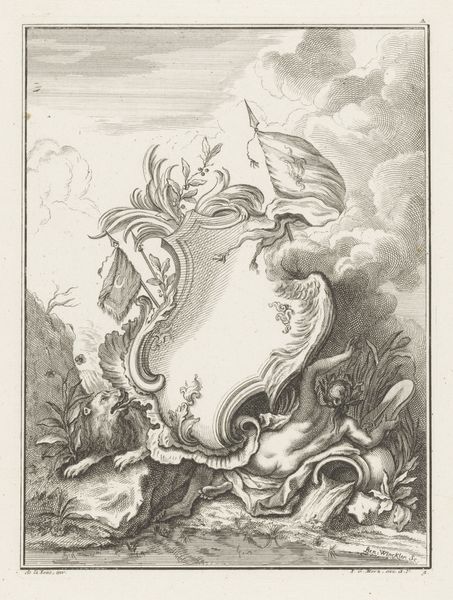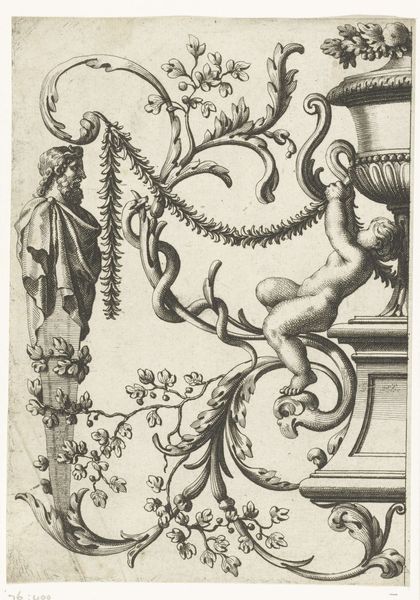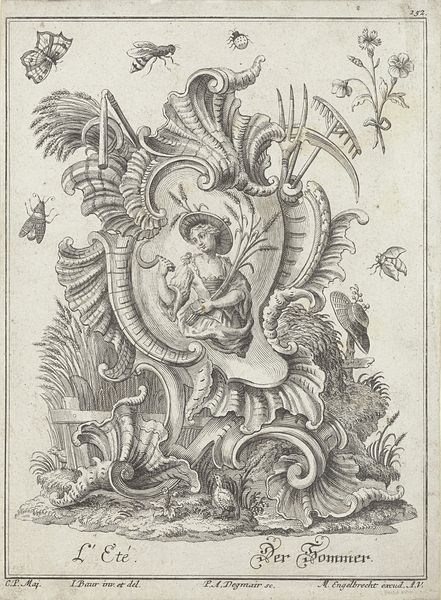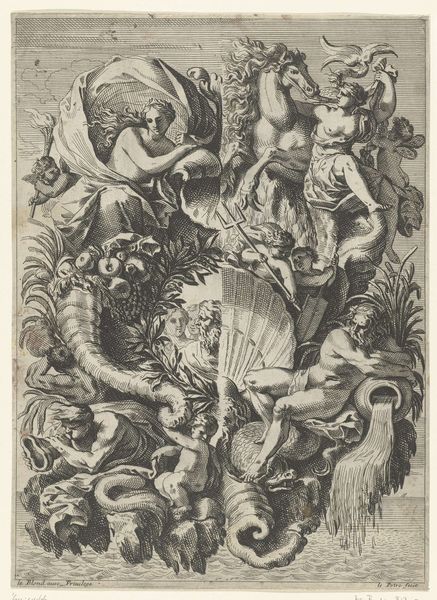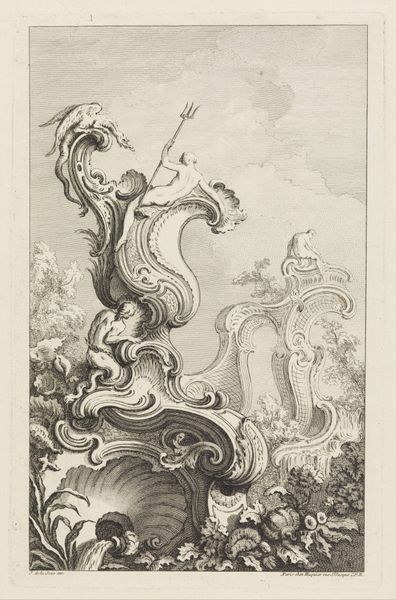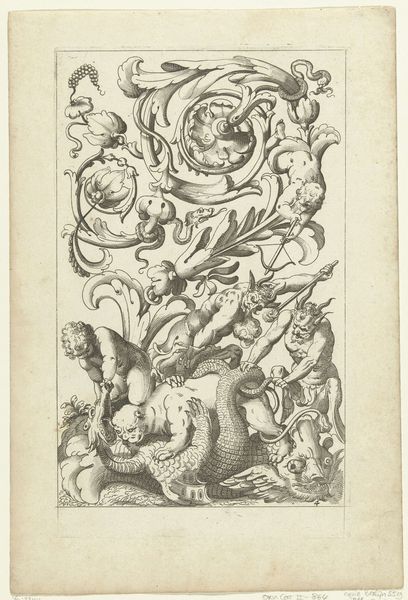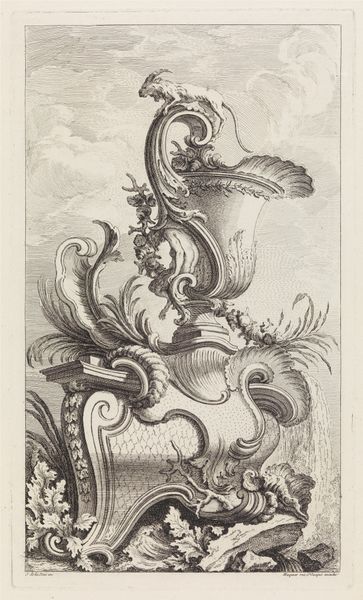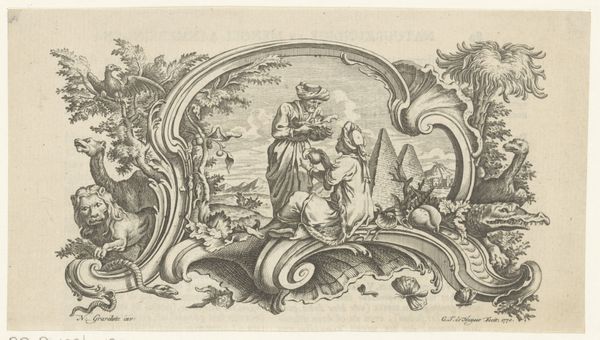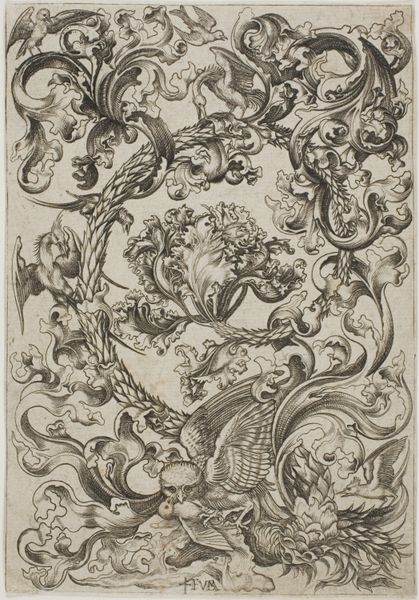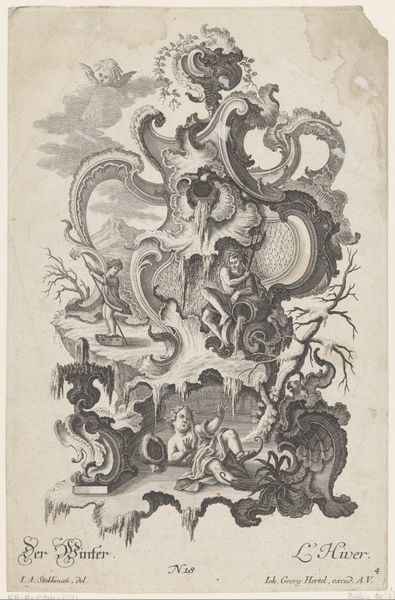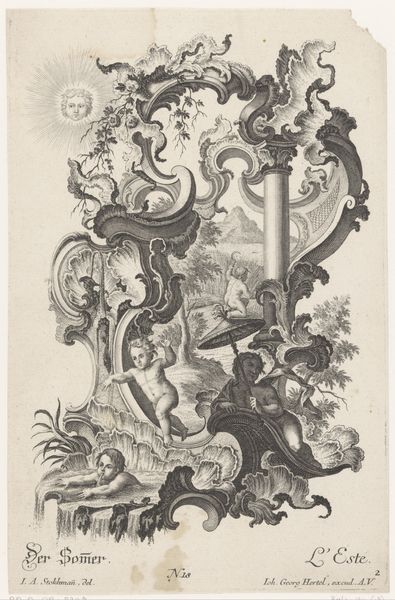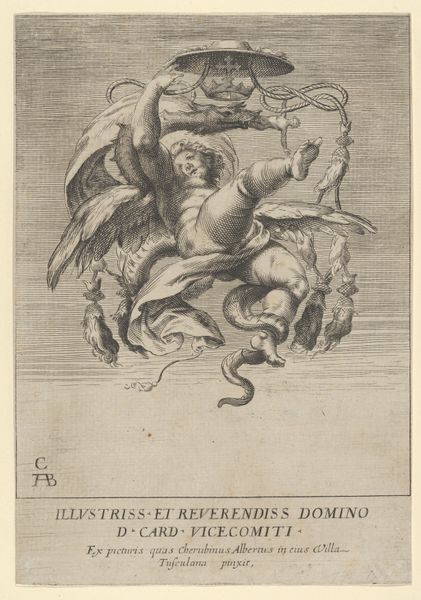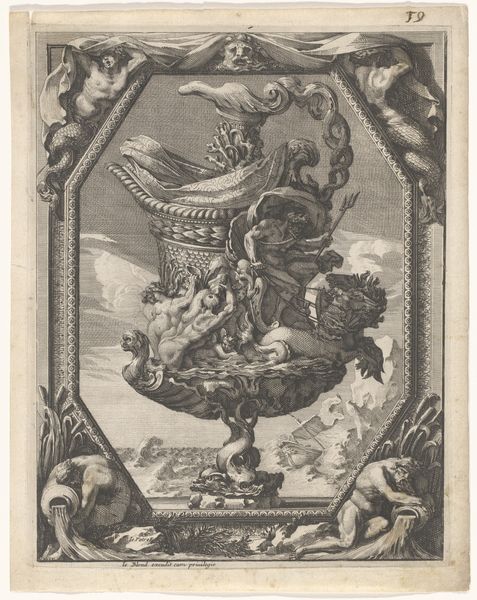
drawing, pen, engraving
#
drawing
#
allegory
#
baroque
#
pen drawing
#
pen
#
history-painting
#
engraving
Dimensions: height 281 mm, width 189 mm
Copyright: Rijks Museum: Open Domain
Curator: This intricate pen and ink drawing is titled “Cartouche met engel,” created in 1738 by Franz Xaver Jungwirth. It exemplifies the Baroque style. Editor: Wow, the energy practically jumps off the page! I'm immediately struck by how dynamic it is, with that angel blowing a horn and the putto with the flag – the artist uses the ornate frame so inventively, it's bursting with vitality. Curator: Precisely. The piece reflects the Baroque fascination with elaborate ornamentation. Consider how Jungwirth utilizes allegory; the angel symbolizes, perhaps, divine inspiration or a heavenly messenger, elements prevalent in that era’s art, religion, and social function. Editor: And notice how these cherubic figures inhabit a space filled with symbols of earthly power. We've got suggestions of war, nobility – that implies so much about the power dynamics and hierarchies present then. Was Jungwirth commenting on them or simply illustrating them? Curator: As an artwork approved and operating under royal privilege, as indicated in the lettering on the print, Jungwirth’s aim was less critique, more glorification of the patron. Images like these visually reinforced the authority and grandeur of ruling houses. This wasn't meant for a revolutionary pamphlet. Editor: That's a critical point. It reminds us that access to resources, including artistic talent, was concentrated among the powerful. The very creation and dissemination of an image like this served a specific political function. Looking closely, even the landscape elements in the foreground reinforce a hierarchical perspective, no? Curator: Undoubtedly. The use of engraving suggests reproduction and widespread dissemination. The intent here was to circulate and broadcast a particular worldview and set of values. The frame itself acts almost as a proscenium. Editor: It really makes you consider what kind of impact artworks like this had on viewers back then – shaping perceptions, reinforcing societal norms, all wrapped up in seemingly decorative images. Curator: Indeed. It’s an important reminder that art always exists within a context – social, political, and historical. Considering that lens is critical to understanding its meaning and purpose. Editor: Absolutely, and looking closely, even at something so seemingly decorative and of its time, reveals underlying currents about power, representation, and social order. Curator: The richness of context that reveals much about that world and reminds us to consider it within our own.
Comments
No comments
Be the first to comment and join the conversation on the ultimate creative platform.
